Discover the meaning of headless CMS
Discover the meaning of a headless CMS. These advanced systems decouple content and presentation layers, ensuring flexible management and API-powered delivery. To increase your web security, make your business more scalable, and increase your reach by scheduling a demo with us today.
Highlights:
You’ll learn about:
- Content separation: Stores content neutrally, away from presentation layers.
- API-Driven delivery: Employs APIs to deploy content to various front ends.
- Backend management: Exclusive back-end editing and management capabilities.
- Enhanced security: Ensures strict protocols for data protection.
- Scalable architecture: Adapts easily to dynamically changing traffic demands.
Are you ready to decouple your content from the presentation layer? Learn how a headless CMS can improve your customer and content experience.
Keep reading to explore more!
Traditional content management architectures were the dominant force in web development until a few years back. But, with the dynamically changing customer demands and marketing requirements, companies are focusing on a headless approach.
48% of companies adopt a headless CMS because of its ability to provide centralized digital content management. And 47% adopt it because of flexibility, making it the right time to embrace this technology.
In this article, we understand the headless CMS meaning, and explore headless vs traditional content management systems, and discover its advantages.
Headless CMS explained
What is the meaning of a headless CMS?
A headless content management system (CMS) separates or decouples the front-end functionalities (like storage and content management) from the back-end functionalities (like content delivery and content presentation). It separates the information from the presentation. As a result, you can reuse the digital content and ensure consistency across multiple channels and platforms. These platforms include websites, digital platforms, mobile applications, and IoT devices.
Because of the decoupling, the content repository of a headless content management system makes content accessible to any front end via a RESTful API. The CMS stores the content in a raw and structured format, such as HTML or JSON.
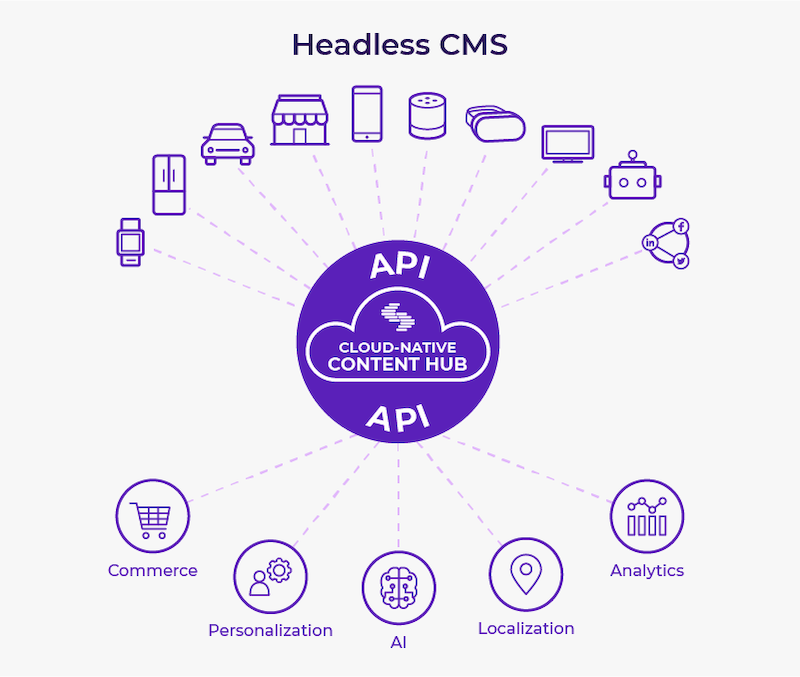
From a developer’s perspective, a headless CMS creates flexible and innovative systems, making them future-proof.
A headless or back-end-only CMS stores content in a different way than a traditional CMS. It stores all the content in a content repository, which digital teams can use to produce entities like images, videos, texts, files, and other assets. A back-end CMS provides content through an application programming interface (API). Front-end systems like websites, mobile apps, smart devices, or virtual reality environments, also called the “heads,” can use these APIs to deliver the content.
As a result, developers can use content with preferred technologies and distribute them to any digital front end from a centralized source. In the long run, the ROI of using a headless CMS outperforms that of a legacy CMS.
What sets a headless CMS different is that it makes your systems scalable, helps you manage content, and eliminates potential content silos.
Advantages of headless CMS
With the headless CMS market likely to reach $5,528.5 million by 2032, knowing the advantages of this platform helps you make informed decisions. As the front end is separate, you can replace and reuse content based on your requirements. Multiple front-end systems can consume the same content, providing a consistent experience across multiple digital channels. Apart from this, the following are the headless CMS benefits:
Overcome traditional CMS issues with Contentstack: Are you tired of slow development times and rising costs due to legacy monolithic suites? Contentstack offers a modern, component-based solution designed for the needs of today's enterprises. Discover agility and improved ROI. Request a demo to learn more.
Enhances performance and faster load time
A traditional CMS generates a complete HTML page on the server side, resulting in slower page load time, especially when you witness a higher traffic volume. These platforms often use unnecessary features and codes, contributing to bloated page sizes.
With a headless CMS, you have complete control over your HTML pages as you deliver content via APIs. This helps you create highly optimized and lightweight websites with a higher page load speed, improving the overall website performance.
Let’s understand how Contentstack helped the Miami Heat deliver real-time personalized digital experiences with a headless CMS.
- Miami Heat changed its choice of content management system from SDL Tridion to Contentstack’s headless CMS.
- A traditional CMS could not meet their expectations, resulting in complex business processes. After adopting a headless CMS, the Miami Heat reduced costs and development time and ensured advanced personalization features.
- As a result, they saw increased app open rates and sales growth and improved their decision-making. Contentstack was a valuable solution for Miami Heat as it provided good ROI and increased user engagement.
After using Contentstack, Edson Crevecoeu, Vice President of Business Intelligence and Strategy at Miami Heat, said:
“Being able to customize a message to just certain segments of the population is key. It is not just the fans engaging with content, but it is everyone in our organization tracking and further improving that engagement. This allows us to derive concrete value from the data we have about our fans.”
Read the full case study here.
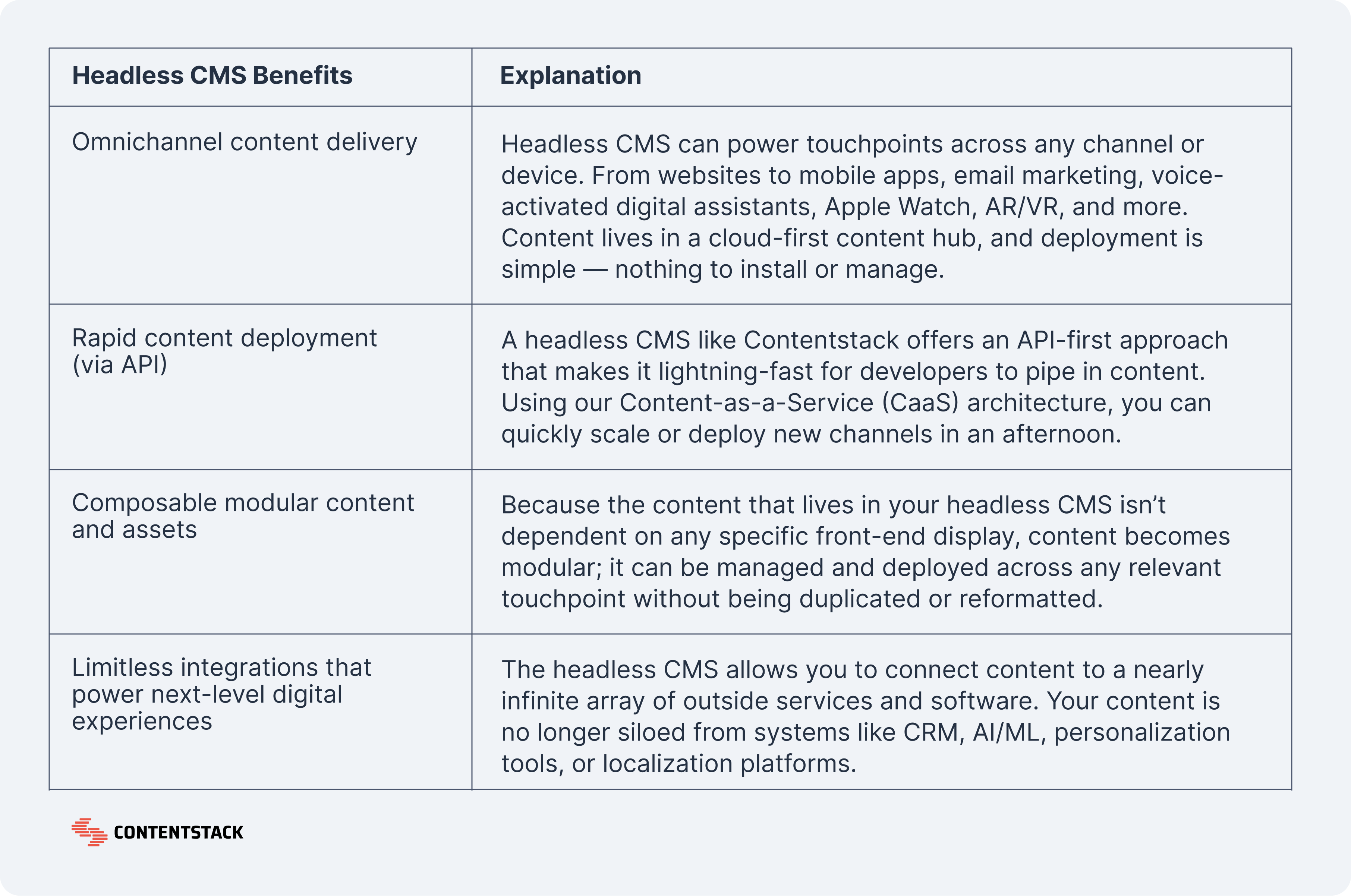
Focuses on omnichannel content delivery and experience
The rise of mobile apps, digital touchpoints like e-commerce platforms, and voice assistants helps you deliver consistent content across multiple channels and platforms. However, a monolithic CMS is ideal only for web content. A headless CMS doesn’t face any of these challenges. Their API-enabled approach ensures consistent content delivery. You can deliver and distribute content over multiple channels without duplicating your effort.
Take Contentstack as an example. Since the content management in Contentstack is decoupled, you can manage, edit, and upload content pages without requiring any help from developers. As a result, non-technical users have more control over their content, increasing the content delivery process. This makes achieving brand consistency easier as you have to push content to multiple channels.
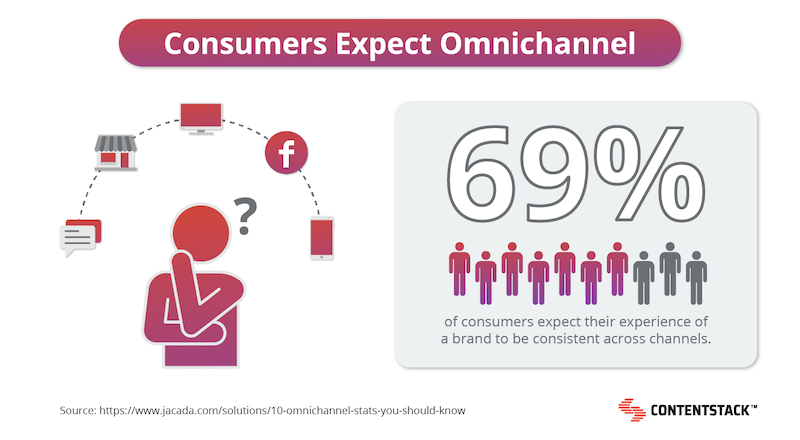
Regardless of the presentation layer, you seamlessly build engaging customer experiences. When customers receive consistent digital experiences, it increases satisfaction and retention rates.
Makes your solution scalable
When your business grows, it might become challenging to scale. Scaling a complex and monolithic platform is difficult as it requires intervention from the developers and the tech team. A headless CMS's distributed and decoupled nature makes it scalable, allowing your website and other platforms to handle high traffic.
Provides flexibility to developers
Developers can innovate and try new features with a decoupled headless content management system. For instance, developers choose the programming language and frameworks based on their projects. Developers can access PHP and JavaScript frameworks and codes in an open-source headless environment to create API calls and templates.
Also, separating the content and the front-end presentation layer empowers developers to iterate different versions and implement changes without disrupting day-to-day content production and publishing. Content editors also like to use headless CMS architecture for this reason.
Removes vendor lock-in
Vendor lock-in is one of the biggest challenges of a legacy CMS. Switching to headless CMS solutions eliminates vendor lock-in. This CMS offers digital content in a standardized manner through APIs. You can store and manage content independently from the presentation layer, helping you migrate to a different platform.
The flexibility to integrate with any front-end system helps you choose the best-fit technology stack. With headless content management systems, you reduce the dependency on a single provider, promoting long-term strategic freedom.
Offers more security
A headless CMS solution amplifies security by reducing attacks. The separated content management and delivery layers mean your presentation side can operate without direct database access.
Additionally, the API layer provides authentication and authorization checks, ensuring that you securely publish content changes. It also safeguards your business against unauthorized access. This isolation between the structured content storage and delivery mechanisms provides better security protocols and mitigates risks associated with legacy CMS.
Futureproof your content management
Headless content management systems futureproof your content management and ensure a flexible approach to web development for marketing teams. For example, to start a marketing campaign, you may need to create various microsites to showcase new products and services to your customers. With a headless CMS, you can build these new digital assets without waiting for the developers to provide a template.
A headless CMS adapts to increased content creation and distribution demands, ensuring business expansion of user roles across content channels.
Today, the risk of platform obsolescence is a major concern. Choosing the right headless CMS mitigates this risk by decoupling the presentation layer from the underlying data and logic layers. This separation makes your business more agile and helps you reorganize and refresh your structured content to align with brand evolutions across different platforms.
The architecture of a headless CMS integrates within the existing tech stack. Using APIs, developers can efficiently bring all elements together. A headless CMS is not only about addressing the present needs but also about setting a flexible foundation for future growth and innovation.
Challenges in using headless CMS solutions
While headless CMS platforms offer numerous benefits, they present these challenges to content editors, developers, businesses, and content creators alike:
Restrictive content authoring experience
In a headless CMS, there is no fancy or full-page WYSIWYG editor. Traditionally, content creators and editors can witness the changes in real-time. However, with headless CMS platforms, the preview is an additional step in publishing your content.
This is because a headless architecture supports multiple digital channels. As a result, you see multiple previews of the same content.
SEO consideration
Since the back-end and front-end are separate, paying attention to SEO strategies is essential to maximize online visibility and organic traffic. This means you must implement various tactics, such as optimizing meta tags with relevant keywords and improving site speed through efficient caching mechanisms and optimized code. You also ensure proper indexing by search engines to rank your content in the result pages. By focusing on these aspects, websites can attract more visitors and achieve better online success.
Complex initial set-up
Implementing a headless system requires a technically oriented setup process and a dedicated team. It involves configuring the server, setting up databases, and integrating APIs. This level of complexity ensures a scalable business, allowing for seamless data flow, efficient resource allocation, and secure data storage. By carefully testing each system, you can create an optimized and reliable infrastructure that supports long-term success.
Despite its numerous advantages to developers and businesses, understanding how it differs from traditional content management systems helps you make an informed choice.
Headless CMS vs. traditional CMS
Compared to a headless CMS, a traditional CMS helps you create, manage, and publish digital content. The interface combines the user-facing side of a website and the server-side or content management side. These systems are monolithic because the dependency on vendor-preferred frameworks, technologies, and databases is high. Such systems can render only on the front end, i.e., a single website.
In the long run, when you consider the training, maintenance, and security updates, the ROI of a traditional CMS is much higher than its counterpart. Also, your team has content silos across various CMS. Companies are switching to a headless architecture like Contentstack to overcome these challenges.
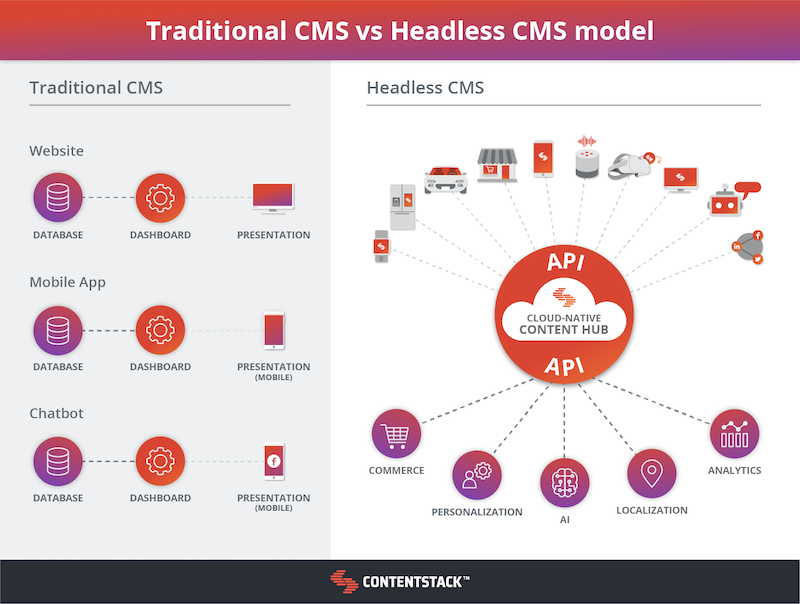
When comparing the headless and traditional CMS content management systems, you must consider the project-specific requirements. Headless CMS comes up with a fast deployment and an environment with everything built in, including content management from the back end and presentation layers on the front end.
Here's a quick comparative overview:
- Flexibility: Headless CMS offers more flexibility, allowing developers to build custom front ends that meet unique demands. At the same time, traditional CMS options might limit customization due to their predefined front-end designs.
- User Experience: Traditional CMS platforms often have user-friendly administrative interfaces, making them ideal for less technical users, whereas headless CMS may require more technical investment upfront to create a similar ease of use.
- Performance: Headless CMS can improve performance since it does not tie content delivery to the same system that manages the back end. This can result in faster content delivery and load times.
- Integration: With headless CMS, integrating with other systems or channels is typically more straightforward, as they deliver content via APIs.
- Security: A headless CMS inherently offers better security prospects due to its decoupled nature, reducing the chances of attack compared to traditional CMS systems.
- Content delivery: A headless CMS ensures content delivery across multiple platforms, focusing on back-end content management. The lack of a defined front-end system allows you to display content to various devices and channels. You achieve this without the constraint of a front-end framework imposed by a traditional CMS. This results in a system that promotes a ‘create once, publish everywhere’ approach.
Choosing the best headless CMS depends on team resources, desired project scalability, multiplatform needs, and the importance of user-friendly content management interfaces.
IDC MarketScape recognizes Contentstack's excellence, naming us a Leader in Headless CMS by IDC MarketScape, Contentstack demonstrates a future-proof CMS strategy, R&D pace in innovation, and exceptional customer delivery. Discover how we can elevate your digital experiences. Request a demo to learn more.
How headless CMS manages content
A headless CMS manages and stores content separately from the presentation layer, ensuring content agility and scalability. You can achieve this decoupling by using the Content as a Service (CaaS) approach, where the stored content or repository acts as the single source of truth to consume content.
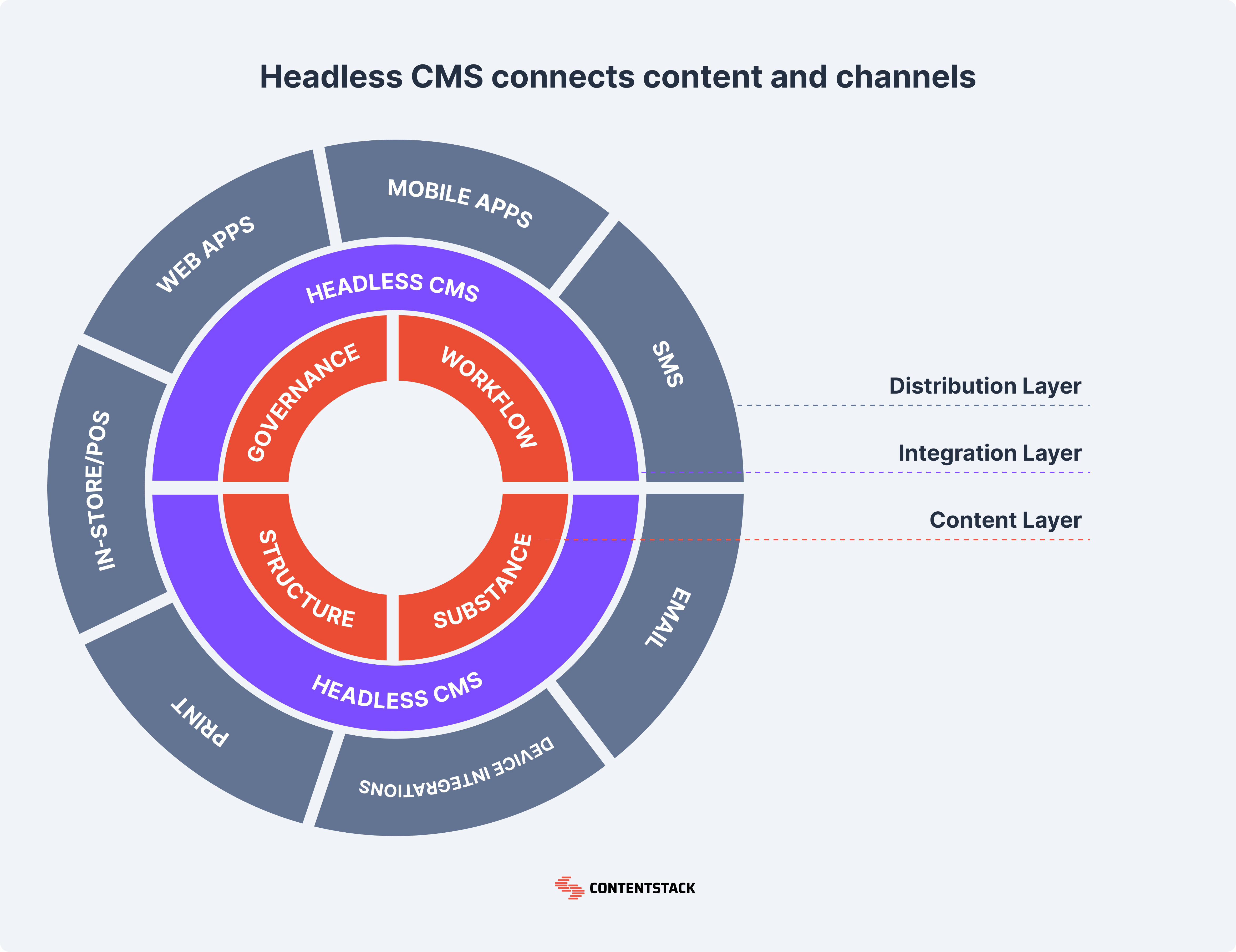
Content is created, edited, and managed in the backend, independently of where or how you will display it. These platforms use API calls to deliver the content to various front-end systems — be it websites, native mobile apps, or IoT devices.
A headless CMS manages the content in the following ways:
- Content storage: A headless CMS stores content in a format-agnostic way, meaning it doesn't impose any presentation structure. It uses a database to accommodate diverse content types and structures.
- API layer: The service-oriented architecture includes an API layer — typically RESTful APIs or GraphQL. This API layer fetches content from the front-end system upon request.
- Content operations: Robust back-end tools ensure content operations, such as version control, scheduling, and multilingual support, without affecting the content delivery mechanisms
- Security considerations: The CMS incorporates strict security protocols to ensure data integrity and protection against unauthorized API and content repository access.
- Scalability mechanisms: The scalability of cloud-native architectures within headless CMS helps you to scale up and down the resources depending on the demand. This allows for high availability and resilience, even during peak traffic periods.
FAQs
How does a headless CMS differ from a decoupled CMS?
A decoupled CMS also separates content in the back-end architecture from the front-end but still provides tools for content presentations. In contrast, a fully headless CMS does not.
What is meant by headless CMS?
A headless CMS is a back-end content management system. In a headless system, the presentation layer decouples from the content repository.
Is headless CMS good?
A headless CMS is good because of its scalable and flexible nature. It helps companies deliver content across various channels.
Is headless CMS secure?
Security-wise, a headless CMS offers superior security. It decouples your presentation layer from the content repository, reducing potential attacks.
What are the 3 benefits of using a headless CMS?
A headless CMS offers these benefits: Omnichannel readiness, greater developer freedom, and faster website performance.
Why is headless better?
Headless is better because it offers flexibility in content delivery, the potential for improved site speed, and the freedom it provides developers to choose the best tools and technologies for the front end.
How does a headless CMS promote scalability for growing businesses?
It facilitates business growth without requiring complete platform overhauls, making it ideal for scaling operations.
Learn more
Headless CMS is changing the way businesses deliver and manage content. It’s an innovative approach to management content. Ensuring your content and web pages are up-to-date with a headless CMS becomes easier. Do you want to take your content strategy to the next level? To understand how a headless CMS can increase your digital presence and ensure a positive customer experience, schedule a demo with Contentstack.
